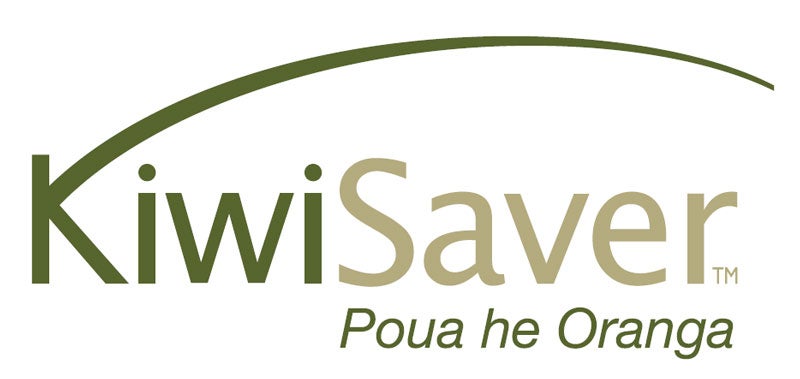What is KiwiSaver?
Starting simple, KiwiSaver is a voluntary retirement savings scheme. Although it is an opt-out scheme, so you will be automatically enrolled upon employment unless you actively choose not to be.
With each paycheck, a percentage of your salary is put into a KiwiSaver scheme of choice, as is a contribution by your employer. You can also make additional voluntary contributions at any time.
This money is then invested in a variety of assets in order to grow the balance over time. Unlike a regular savings account or investment portfolio, however, you don’t get access to your KiwiSaver funds until you retire, or if you intend to use it as part of a first home deposit.
How does it work?
There are several KiwiSaver providers across the country offering dozens of KiwiSaver funds. These funds differ on factors such as risk, investment strategy, ethics and more.
Upon signing up for KiwiSaver you can select the KiwiSaver fund of your choice. To make that process easier, we compare KiwiSaver providers.
If you don’t select a KiwiSaver fund, your employer will either select one for you or you will be placed into a default fund. These are a small selection of balanced funds chosen by the Government.
Any money put into the fund is then pooled together with other KiwiSaver members and invested in a variety of assets. This could include stocks, property, bonds, cash and more. The exact make-up of your fund will depend on the provider and fund type.
For example, a growth fund will have a higher percentage of riskier, growth assets like stocks. A conservative fund will primarily invest in safer assets such as bonds and term deposits.
Different types of KiwiSaver funds
Below we have listed the different types of KiwiSaver funds. It’s worth noting that the actual make-up of the funds will differ between providers and funds:
Defensive fund
A defensive KiwiSaver fund provides the highest level of security but the lowest potential for growth. A defensive fund holds less than 10% of your investment in growth assets. Instead, it invests primarily in things such as cash and government bonds. While these are low risk, there is still no guarantee that you won’t lose some of your investment. And, because any growth is likely to be small, it may not even keep up with inflation.
Defensive funds are only suitable for those who are not looking for further growth in their KiwiSaver fund. But rather are looking for security. Those who want to avoid dips in balance and maintain their investments. That may be because they have reached retirement age and are looking to hold on to what they have. Or perhaps they are FHBs who are about to use it as a home deposit and can’t afford a sudden drop in balance.
Conservative fund
A conservative fund is similar to a defensive fund, but with a touch more risk. Conservative funds hold anywhere from 10% to 34.9% in growth assets. These funds remain suitable for those who want added security, but with a little more growth potential. Perhaps you haven’t yet retired but are just a few years away. Or, you could be looking to buy a first home within the next few months. As such, you want to avoid any drastic dips in balance, but you can afford to have a little short-term risk for better growth opportunities.
Balanced fund
As the name suggests, this fund is a balance between income assets (such as cash, bank deposits, bonds, and other fixed-interest investments) and riskier growth assets (around 35%-62.9%) such as shares and property. This results in a fund that has a balance of high risk-high reward investments and secure, low-growth assets.
Balanced KiwiSaver funds are typically suited to investors who are not looking to withdraw in the next 5-10 years. They are comfortable seeing a fair degree of variation in their balance for potentially greater long-term returns than those offered by conservative or defensive funds.
Growth fund
Growth funds are good for investors who don’t intend on accessing their KiwiSaver in the next 10 or so years and, as such, are okay with seeing highs and lows within that period. The reward is that growth funds tend to offer much higher long-term returns.
Growth KiwiSaver funds hold a significantly larger proportion of growth assets: 63% to 89.9%. And as a result, move with the market. Meaning your KiwiSaver balance could be well up one week and well down the next. So, naturally, this type of fund may not be appropriate for those looking to retire soon, or those about to access their KiwiSaver for a first home deposit.
Aggressive fund
Aggressive KiwiSaver funds are similar to growth funds, but with an even higher share of growth assets (90%-100%). This means that the risk of losses is even greater, but so are potential gains. If you choose an aggressive fund, you need to be comfortable experiencing drastic drops in your KiwiSaver balance.
As you would expect, an aggressive fund is probably not right for you if you plan to access your KiwiSaver in the short term.
Compare KiwiSaver funds with Canstar
KiwiSaver as a first home deposit
Aside from a retirement fund, KiwiSaver can be used as a deposit for a first home.
In order to be eligible for a KiwiSaver withdrawal you must:
- Have had KiwiSaver for at least three years
- Be a FHB (or be in a similar financial position to a FHB)
- Purchase a house (or land) in New Zealand
- Live in the house (it can’t be used as an investment property)
- Leave a minimum of $1000 in your KiwiSaver
- Not have used your KiwiSaver for a first home withdrawal in the past
→Related article: Can I Use KiwiSaver to Buy Land or a First Home?
What if I’m self-employed or unemployed? Can I still have KiwiSaver?
Yes, you don’t have to be employed or an employee to join KiwiSaver. However, you will miss out on employer contributions. The only money going into your KiwiSaver will be funds you put in yourself, and any government contributions.
KiwiSaver government contributions
The government will contribute 50 cents for every dollar you contribute to your KiwiSaver account, up to a maximum contribution of $521.43 each year. So if you put $100 into KiwiSaver, the government will put $50.
That means to earn the full contribution, you must contribute at least $1042.86 of your own money each year (between 1 July to 30 June).
→Related article: How to Get KiwiSaver Government Contributions
Compare KiwiSaver providers with Canstar
The comparison table below displays some of the products currently available on Canstar’s database for a KiwiSaver member with a balance of $50,000 in an Aggressive fund, sorted by Star Rating (highest to lowest), followed by company name (alphabetical) – some products may have links to providers’ websites. Use Canstar’s KiwiSaver comparison selector to view a wider range of super funds. Canstar may earn a fee for referrals.
If you’re looking for the best KiwiSaver, don’t just focus on fees and charges. Do your research, compare providers and look for the provider that best matches your appetite for risk and your long-term goals.
If you want to read more about our latest KiwiSaver Awards, click on the button below.
Compare KiwiSaver providers for free with Canstar!

About the author of this page
This report was written by Canstar Content Producer, Andrew Broadley. Andrew is an experienced writer with a wide range of industry experience. Starting out, he cut his teeth working as a writer for print and online magazines, and he has worked in both journalism and editorial roles. His content has covered lifestyle and culture, marketing and, more recently, finance for Canstar.
Enjoy reading this article?
You can like us on Facebook and get social, or sign up to receive more news like this straight to your inbox.
By subscribing you agree to the Canstar Privacy Policy





Share this article